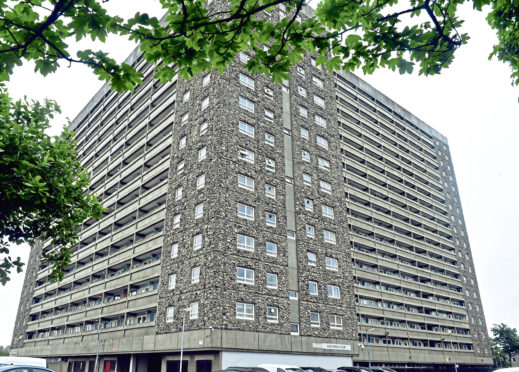Local authorities throughout the land have been grinding them into rubble for years.
In Aberdeen, on the other hand, they have been lauded as structures requiring top architectural billing.
I am referring to the eight post-war multi-storey blocks of flats awarded category A-listed status by Historic Environment Scotland (HES).
Outwardly, they are not as pleasing on the eye as similar A-listers like Marischal College or the Music Hall.
High rises like Gilcomstoun Land and Hutcheon Court may be cosy and comfortable internally, but looking at their exterior prods us to argue that they can’t claim to rank alongside King’s College Chapel and Provost Skene’s House as the city’s special properties.
They do, though, beat one A-listed building – Westburn House, a heap of debris with a promise of rejuvenation. We’ll see.
The new-found standing of the multis will, at least, offer hope to those who might wish to promote the former Lang Stracht Hotel and the John Lewis department store buildings as potential prize-winners from an era when concrete ruled the roost in construction.
I know many people who welcomed those tower blocks at a time – the 1960s – when homemakers were desperate for affordable council homes.
They worked hard at persuading the local housing officer wherever they lived that they deserved a flat in the sky.
There were pleas of “gie’s a hoose” and “there’s something in this brown envelope for you”.
Success with your efforts meant you left your private landlord or your poorly-equipped cramped tenement behind for a new and exciting adventure and considerably more space than you were used to.
I saw similar tower blocks in places like East Berlin in 1965 (long before the DIY demolition team removed the wall) and Bucharest where Nicolae Ceausescu was probably on the housing committee which passed them in the Romanian capital.
In time, he became the president before being bumped off, though not by a displeased voter when council house keys were handed out.
HES say the Aberdeen buildings are examples of “brutalist” architecture and are of “outstanding importance” to the country.
It’s a bit like saying Quasimodo should have been a sackcloth model for Pierre Cardin.
But the quango raises eyebrows when it says the multi-storeys are “some of the finest examples of social housing Scotland” and help tell the story of how the country emerged from the Second World War.
They do; goodness knows, we need more local authority homes now.
Sure, the tower blocks were desperately needed and erected quickly and in compact spaces to accommodate the needs of families who still love them.
But architecturally important? I think not.
Smart? Do not trust a thing those meters say
Remember the hard sell to install smart meters for our gas and electricity readings?
“They’ll reduce your bills,” the utilities companies told us.
A tale I’ve been told this week underlined my belief that the installation of the new super-duper equipment is a racket, and a failed one at that.
An acquaintance has been dealing with demands for the payment for gas and electricity for a flat that has been unoccupied for the best part of a year.
Inquiries to the supplier, SSE, revealed that the not-very-smart meter had been spewing out estimates, which were supposed to be a thing of the past with the new technology.
“Aren’t they there to give accurate readings?” he asked the human who answered his call after almost an hour. “Isn’t that the point of them?”
The SSE man admitted the meter had estimated his usage – or non-usage in this case – and that he would have to call each time he had a bill for the empty apartment to request a refund.
According to a report in 2019, at least one in 10 smart meters was operating in “dumb” mode and did not send back energy consumption data to the suppliers.
So keep an eye on your smart meter bills.
They are not necessarily correct and your energy supplier won’t let on when they overcharge you.
Cut out ‘middle men’ to reveal truth
Sometimes “middle men” are surplus to requirements.
So, what’s not to like about the UK Government going straight to Scottish councils with funding rather than handing it to their counterparts at Holyrood for distribution?
With Aberdeen complaining they have been short-changed by the SNP administration for years, it will be interesting to discover if Rishi Sunak will cough up more than Kate Forbes.
Maybe Ms Forbes is unhappy with the new arrangement because it will highlight Aberdeen has, indeed, missed out on millions.
